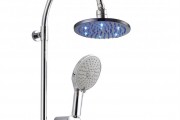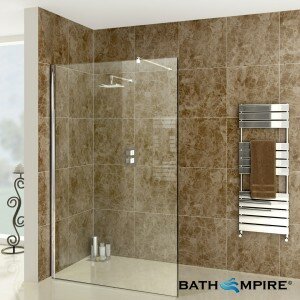
How to choose the right shower for you
Posted on 02. Aug, 2011 by Charlotte Laing in Advice
There’s nothing quite like a good shower. But what a good shower actually is, well that’s something that’s up for debate.
Most of us want our showers to be powerful, piping hot (or at least nice and warm when you wake up in the mornings. But do you want your shower over your bath or in a cubicle, and how do you want to heat the water – from your boiler, or using electricity?
There are so many different types of shower to choose from that it can be difficult to know what to opt for.
That’s why we’ve put together this handy guide to the different types of shower available – hopefully it’ll make your choice a little easier.
Over bath
The simple shower solution is to simply install a riser rail and have a shower hose leading up from your bath taps.
The temperature of the water will be dictated by how much hot water you have in your boiler (just like it is with a bath) and the pressure will be the same as that produced by your bath taps.
This tends to be an inexpensive option and can even be fitted retrospectively once you’ve had a bath installed – you’ll just need to change the taps.
Another option is to choose an electric shower positioned over the bath. In this case both the pressure and the temperature of the shower will be dictated by the electric unit you have installed.
Stand alone cubicle
In smaller bathrooms, many people will say that opting for a roomy shower cubicle is better than trying to squeeze in a small bath – the shower will feel luxurious whereas the bath will feel cramped.
You’ll need a shower tray, a cubicle, a thermostatic control, riser rail and shower head. The area will have to be tiled and sealed to prevent damage to the bathroom.
If you have enough room though, you might be able to have both a bath and a shower.
Wet room
A wet room is actually a great idea if you have a lack of space as the shower needs no containing – just let the water go everywhere.
You won’t need a shower tray, but you’ll have to get the area around the shower and the floor tiled, and make sure there’s adequate drainage so you don’t get any build-ups of water.
Installing a wet room can be a tricky job so you could enlist the help of a specialist bathroom designer, or even an architect, as they will make sure the waterproofing of the room is effective.
Electric showers
Whether you’re installing your shower over your bath or in a stand-alone cubicle, one option is to have an electric shower.
They come in a variety of styles, but usually involve a control box which needs to be attached to the wall.
They draw on the cold water supply only and heat the water instantly on demand, which makes them very energy efficient (there’s no hot water wastage).

Bath mixer tap with shower attachment
Mixer showers
These draw from both hot and cold water supplies and usually deliver higher flow rates, depending on where you locate the shower in your home.
Mixer showers are a great solution for homes with readily available hot water (perhaps from a combi boiler or large capacity hot water cylinder).
In the simplest of these shower designs, the shower won’t have any electrical element itself – it will simply mix the hot and cold water together and then deliver it through the shower head.
If you want to create extra ‘oomph’ with this type of shower, then you could add an integrated pump to boost the flow rate – which will help if your system has low pressure.
We hope this guide to showers has been useful. Just give us a call if you need more advice.


